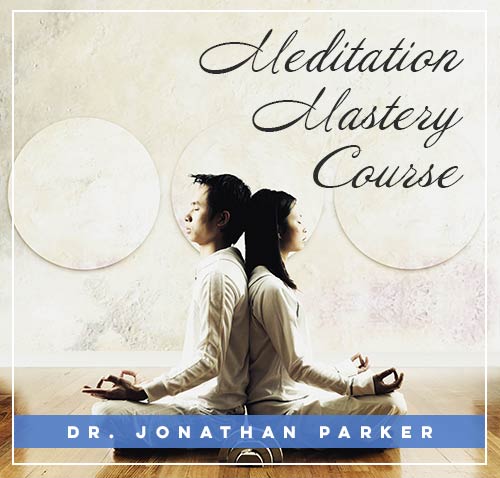Attaining Inner Silence: Deep Meditation Practice

Before diving in, please note: This post is for informational purposes only. If you’d like to know more about how we approach topics, feel free to check out our friendly Disclaimer Page.
Hey there, amazing readers! 🖐️ Just a quick note: yes, we know there are a lot of ads here. Trust us, we get it—it’s not the prettiest look, but they help us keep this blog alive and kicking. Those pesky little ads cover the costs of all the behind-the-scenes magic, from hosting and tech stuff to creating content we hope you’ll love.
We’re committed to delivering quality posts, and your support (even just sticking around despite the ads) means everything to us. So, bear with us, and thanks for helping us keep the good vibes rolling. Now, on to the fun stuff! 😉
TRANSLATE BUTTON AT THE END OF THE ARTICLE
A Quick Overview
In today’s fast-paced world filled with constant distractions and noise, attaining inner silence through deep meditation practice has become more essential than ever.
Inner silence refers to a state of calmness and stillness within the mind, free from the chaos of thoughts and emotions.
This state allows individuals to connect with their inner selves, cultivate mindfulness, and experience profound peace and clarity.
Deep meditation is a powerful tool that can help individuals achieve this state of inner silence, leading to improved mental, emotional, and physical well-being.
By understanding the benefits of inner silence, exploring the basics of deep meditation, and learning effective techniques to cultivate inner stillness, individuals can experience the transformative power of this practice.
Understanding the Benefits of Inner Silence
Enhanced Mental Clarity: Inner silence allows the mind to quiet down, leading to improved mental clarity and focus.
This clarity can help individuals make better decisions, solve problems more effectively, and enhance their overall cognitive function.
Stress Reduction: Deep meditation promotes relaxation and reduces stress levels by calming the nervous system and releasing tension from the body.
By practicing inner silence, individuals can experience a sense of calm and peace amidst life’s challenges.
Increased Emotional Stability: Attaining inner silence through deep meditation can help individuals regulate their emotions and respond to situations with greater emotional intelligence.
This can lead to healthier relationships and a greater sense of emotional well-being.
Improved Physical Health: Research has shown that deep meditation can have a positive impact on physical health by reducing inflammation, lowering blood pressure, and boosting the immune system.
By cultivating inner silence, individuals can support their overall health and well-being.
Spiritual Growth: Inner silence can deepen individuals’ spiritual connection and awareness, helping them tap into a sense of inner peace, wisdom, and intuition.
This can lead to a greater sense of purpose and fulfillment in life.
Exploring the Basics of Deep Meditation
Find a Quiet Space: Choose a quiet and comfortable space where you can meditate without interruptions.
Create a peaceful environment by dimming the lights, playing soft music, or lighting candles.
Sit Comfortably: Sit in a relaxed and upright posture, either on a cushion on the floor or in a chair with your feet flat on the ground.
Keep your spine straight and your shoulders relaxed.
Focus on Your Breath: Begin by focusing on your breath, noticing the sensations of inhalation and exhalation.
This can help anchor your mind and bring your awareness to the present moment.
Release Thoughts: As thoughts arise during meditation, acknowledge them without judgment and gently release them.
Return your focus to your breath or a mantra to quiet the mind.
Practice Regularly: Consistency is key in deep meditation practice.
Set aside time each day to meditate, even if it’s just for a few minutes.
Over time, you will notice the benefits of regular practice.
Setting the Foundation for a Deep Meditation Practice
Establish Intentions: Before beginning your meditation practice, set clear intentions for what you hope to achieve, whether it’s inner peace, emotional healing, or spiritual growth.
Let these intentions guide your practice.
Create a Routine: Develop a daily meditation routine that fits into your schedule and lifestyle.
Consistency is key in establishing a deep meditation practice.
Seek Guidance: Consider seeking guidance from a meditation teacher or joining a meditation group to deepen your practice and receive support and encouragement.
Let Go of Expectations: Release any expectations or judgments about your meditation practice.
Approach each session with an open mind and a sense of curiosity.
Reflect and Journal: After each meditation session, take a few moments to reflect on your experience and journal any insights or observations.
This can help deepen your awareness and understanding of your practice.
Techniques to Cultivate Inner Silence
Focused Attention Meditation: Focus on a single point of attention, such as your breath, a candle flame, or a mantra.
When distractions arise, gently bring your focus back to the chosen point.
Body Scan Meditation: Scan your body from head to toe, noticing any sensations or areas of tension.
Relax each part of your body as you bring awareness to it, cultivating a sense of inner calm and stillness.
Loving-Kindness Meditation: Cultivate feelings of love and compassion towards yourself and others through loving-kindness meditation.
This practice can help soften the heart and foster a sense of inner peace and connection.
Visualization Meditation: Visualize a peaceful and serene place, such as a beach or a forest, and immerse yourself in the sights, sounds, and sensations of that place.
This can help calm the mind and evoke a sense of inner silence.
Mantra Meditation: Repeat a sacred word or phrase silently or aloud during meditation to focus the mind and cultivate inner stillness.
Mantra meditation can help quiet the mental chatter and deepen your connection to the present moment.
Overcoming Common Challenges in Meditation
Restlessness: If you find it challenging to sit still during meditation, try gentle movement practices like yoga or walking meditation to help release excess energy and calm the mind.
Mind Wandering: When your mind wanders during meditation, gently guide your focus back to your breath or chosen point of attention.
Practice self-compassion and patience as you return to the present moment.
Impatience: If you feel impatient or frustrated with your meditation practice, remind yourself that progress takes time and that each session is an opportunity for growth and self-discovery.
Physical Discomfort: If you experience physical discomfort during meditation, adjust your posture or use props like cushions or blankets to support your body and make sitting more comfortable.
Distractions: Minimize external distractions by meditating in a quiet space or using earplugs or white noise machines.
If internal distractions arise, acknowledge them without attachment and refocus your attention.
Deepening Your Practice for Lasting Results
Explore Advanced Techniques: Once you feel comfortable with basic meditation practices, explore advanced techniques such as vipassana, Zen, or transcendental meditation to deepen your practice and expand your awareness.
Attend Retreats: Consider attending meditation retreats or workshops to immerse yourself in a supportive environment and deepen your practice alongside like-minded individuals.
Engage in Silent Retreats: Silence retreats offer a unique opportunity to deepen your practice and connect with your inner self without external distractions.
Consider participating in a silent retreat to cultivate profound inner silence.
Practice Gratitude: Cultivate a sense of gratitude for your meditation practice and the benefits it brings to your life.
Express gratitude for each moment of stillness and presence you experience during meditation.
Trust the Process: Trust in the process of deep meditation and the transformative power it holds.
Embrace the journey of self-discovery and inner growth that comes with consistent practice and dedication.
Creating a Sacred Space for Meditation
Choose a Quiet Location: Select a quiet and peaceful location in your home where you can meditate without disturbances.
Consider creating a designated meditation space that is free from clutter and distractions.
Decorate Mindfully: Decorate your meditation space with items that inspire a sense of peace and harmony, such as candles, crystals, plants, or meaningful objects.
Personalize the space to reflect your unique spiritual or aesthetic preferences.
Use Soft Lighting: Opt for soft, natural lighting or candles to create a warm and inviting atmosphere in your meditation space.
Avoid harsh overhead lighting that may cause distractions or discomfort.
Play Relaxing Music: Play calming music or nature sounds in the background to enhance the ambiance of your meditation space.
Choose music that promotes relaxation and helps you focus your mind during meditation.
Set Intentions: Before each meditation session, set clear intentions for your practice and the energy you wish to cultivate in your sacred space.
Invite feelings of peace, clarity, and connection into the space to support your meditation practice.
Incorporating Mindfulness into Your Daily Routine
Start the Day Mindfully: Begin your day with a mindfulness practice, such as meditation, journaling, or conscious breathing.
Set a positive tone for the day by cultivating presence and awareness from the moment you wake up.
Practice Mindful Eating: Pay attention to the sensations, flavors, and textures of your food as you eat, savoring each bite mindfully.
Eating mindfully can enhance your relationship with food and promote a sense of gratitude for nourishment.
Engage in Mindful Movement: Incorporate mindful movement practices like yoga, tai chi, or qigong into your daily routine to cultivate presence and body awareness.
These practices can help ground you in the present moment and reduce stress.
Take Mindful Breaks: Throughout the day, take short breaks to pause, breathe, and check in with yourself.
Use these moments of mindfulness to recenter and refocus your energy, bringing greater awareness to your thoughts and emotions.
Practice Gratitude: Cultivate a daily gratitude practice by reflecting on the things you are thankful for in your life.
Express gratitude for the present moment, the people in your life, and the experiences that bring you joy and fulfillment.
The Role of Breath in Attaining Inner Silence
Anchor for Awareness: The breath serves as an anchor for awareness in meditation, helping individuals focus their attention on the present moment and cultivate inner stillness.
By observing the breath, individuals can quiet the mind and connect with their inner selves.
Regulation of Emotions: Conscious breathing techniques can help regulate emotions and reduce stress by activating the body’s relaxation response.
Deep, slow breaths can calm the nervous system and promote a sense of calm and balance.
Mind-Body Connection: The breath is deeply interconnected with the mind and body, serving as a bridge between conscious awareness and physical sensations.
By tuning into the breath, individuals can cultivate a greater sense of mind-body connection and presence.
Cultivation of Presence: Focusing on the breath during meditation can help individuals cultivate presence and mindfulness in their daily lives.
By returning to the breath as a point of focus, individuals can anchor themselves in the present moment and let go of distractions.
Gateway to Inner Silence: The breath can serve as a gateway to inner silence and deep states of meditation.
By following the natural rhythm of the breath and surrendering to its flow, individuals can access profound states of stillness and clarity within themselves.
Cultivating Patience and Persistence in Meditation
Embrace Imperfection: Accept that meditation is a practice that requires patience and persistence, and that it’s normal to experience challenges and setbacks along the way.
Embrace imperfection as part of the journey towards inner growth.
Be Gentle with Yourself: Practice self-compassion and kindness towards yourself as you navigate the ups and downs of meditation.
Treat yourself with the same patience and understanding you would offer to a friend.
Celebrate Small Wins: Acknowledge and celebrate the small victories and breakthroughs you experience in your meditation practice, whether it’s a moment of inner peace, a sense of clarity, or a release of tension.
Set Realistic Expectations: Avoid setting unrealistic expectations for your meditation practice and be realistic about the progress you can make.
Trust that each session, no matter how challenging, is contributing to your growth.
Stay Committed: Stay committed to your meditation practice even when it feels difficult or unproductive.
Consistency is key in cultivating inner silence and reaping the benefits of deep meditation over time.
Nurturing Self-Compassion Through Meditation
Practice Loving-Kindness: Use loving-kindness meditation to cultivate feelings of love, compassion, and forgiveness towards yourself.
Offer yourself words of kindness and encouragement during meditation to nurture self-compassion.
Release Self-Judgment: Let go of self-criticism and judgment during meditation, and instead, approach yourself with acceptance and understanding.
Embrace your flaws and imperfections as part of your unique journey.
Offer Forgiveness: Practice forgiveness towards yourself for past mistakes or shortcomings, acknowledging that you are worthy of self-love and compassion.
Release any guilt or shame that may be holding you back from experiencing inner peace.
Embrace Vulnerability: Allow yourself to be vulnerable and open during meditation, letting go of the need to be perfect or in control.
Embrace your authenticity and humanity, knowing that self-compassion arises from a place of vulnerability and openness.
Cultivate Self-Care: Prioritize self-care and self-nurturing practices in your daily life to support your emotional well-being and inner growth.
Treat yourself with the same care and kindness you would offer to a loved one, nurturing a sense of self-compassion and self-love.
Harnessing the Power of Silence for Inner Peace
Embrace Stillness: Embrace moments of silence and stillness in your daily life, allowing yourself to pause, breathe, and connect with your inner self.
Cultivate a sense of inner peace and presence by honoring moments of quiet.
Practice Active Listening: Practice active listening in your interactions with others, giving them your full attention and presence.
By listening mindfully, you can cultivate deeper connections and foster a sense of inner peace.
Simplify Your Environment: Create a peaceful and clutter-free environment in your home and workspace to promote inner peace and clarity.
Simplify your surroundings to reduce distractions and create a sense of calm and order.
Engage in Digital Detox: Take regular breaks from technology and screens to disconnect from external noise and distractions.
Use this time to reconnect with yourself, nature, or loved ones, fostering a sense of inner peace.
Connect with Nature: Spend time in nature to experience the healing power of silence and stillness.
Connect with the natural world, whether through walks in the park, hikes in the mountains, or moments of quiet reflection by a body of water.
Conclusion
Attaining inner silence through deep meditation practice is a transformative journey that can lead to enhanced mental clarity, reduced stress, increased emotional stability, improved physical health, and spiritual growth.
By understanding the benefits of inner silence, exploring the basics of deep meditation, and learning effective techniques to cultivate inner stillness, individuals can experience profound peace and clarity in their lives.
By overcoming common challenges in meditation, deepening their practice for lasting results, creating a sacred space for meditation, and incorporating mindfulness into their daily routines, individuals can harness the power of silence for inner peace and well-being.
Nurturing self-compassion and persistence in meditation, cultivating the role of breath in attaining inner silence, and embracing the power of silence in daily life can further deepen the practice and bring profound inner transformation.
With dedication, patience, and a commitment to self-discovery, individuals can tap into the profound wellspring of peace and wisdom that lies within through the practice of deep meditation and inner silence.

The Enlightenment Journey is a remarkable collection of writings authored by a distinguished group of experts in the fields of spirituality, new age, and esoteric knowledge.
This anthology features a diverse assembly of well-experienced authors who bring their profound insights and credible perspectives to the forefront.
Each contributor possesses a wealth of knowledge and wisdom, making them authorities in their respective domains.
Together, they offer readers a transformative journey into the realms of spiritual growth, self-discovery, and esoteric enlightenment.
The Enlightenment Journey is a testament to the collective expertise of these luminaries, providing readers with a rich tapestry of ideas and information to illuminate their spiritual path.
Our Diverse Expertise 🌟
While our primary focus is on spirituality and esotericism, we are equally passionate about exploring a wide range of other topics and niches 🌍📚. Our experienced team is dedicated to delivering high-quality, informative content across various subjects ✨.
To ensure we provide the most accurate and valuable insights, we collaborate with trusted experts in their respective domains 🧑🏫👩🏫. This allows us to offer well-rounded perspectives and knowledge to our readers.
Our blog originally focused on spirituality and metaphysics, but we’ve since expanded to cover a wide range of niches. Don’t worry—we continue to publish a lot of articles on spirituality! Frequently visit our blog to explore our diverse content and stay tuned for more insightful reads.






